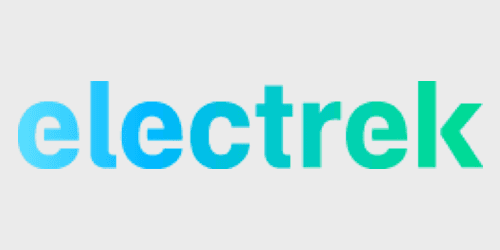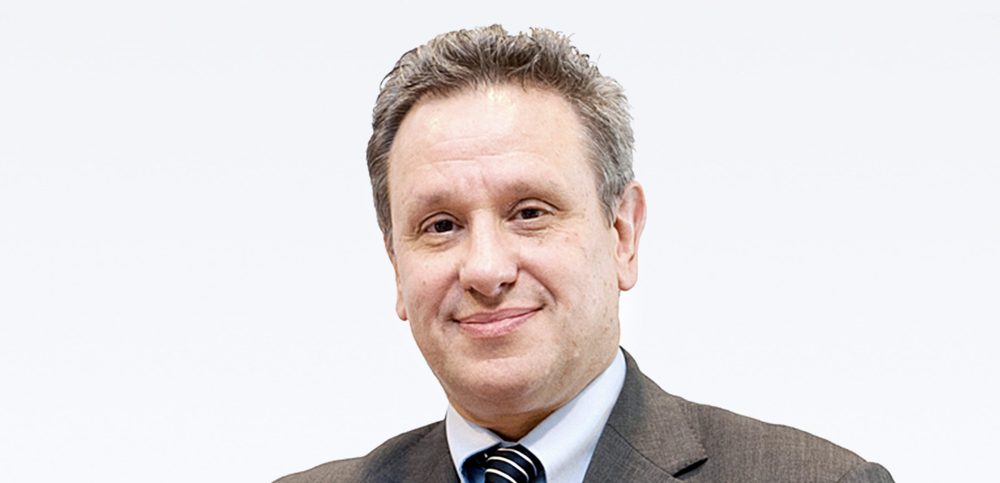
Electrek‘s Michelle Lewis spoke with head of Enel North America Enrico Viale about why clean energy is better and cheaper than fossil fuels, and why modernizing the grid and battery storage are vital for EV charging and renewables implementation.
UnderstandSolar is a free service that links you to top-rated solar installers in your region for personalized solar estimates. Tesla now offers price matching, so it’s important to shop for the best quotes. Click here to learn more and get your quotes. — *ad.
Electrek: Apart from urgently aiming to reduce emissions, why do you think clean energy is a better alternative to fossil fuels? How does clean energy compare to fossil fuels in terms of cost, speed and ease of bringing to market, and profitability?
Enrico Viale: In the traditional, centralized energy model, consumers don’t play an active role – they simply pay utility companies for electricity – and it primarily leverages fossil fuels, which are finite resources, emit massive amounts of CO2, and are becoming increasingly expensive to operate and manage. This model is costly and fails to account for the shift happening among consumers who are demanding a decarbonized power source.
As the only way to address the dramatically worsening climate crisis will be to achieve 100% clean electricity, consumers will progressively move their energy consumption toward renewable sources over the next 10 years and take a more participatory role in managing their energy, ultimately shifting from consumers into prosumers.
The initial infrastructure needed for renewable energy is an investment, but once it’s established, renewable energy prices are driven down as demand increases and deployment is scaled. This means that as adoption grows exponentially in the coming years and we continue to leverage flexible technologies to drive the transition, prices will continue to drop, and time to market will continue to speed up. Renewables are also faster to market and less expensive than fossil fuels in almost any geography.
In 2020, an analysis by BloombergNEF found that solar photovoltaic and onshore wind are now the cheapest sources of new-build generation for about two-thirds of the global population. Simply put, renewable energy is the cheapest source of energy available, and those who fail to pivot away from fossil fuels in favor of a more flexible, electrified approach run the risk of becoming obsolete.
Electrek: What is Enel doing to make the switch to renewables, and what is the long-term plan to get to net zero?
Enrico Viale: If the previous decade was focused on renewable energy discovery, the next decade will be about electrification.
As part of the strategy rolled out at our recent Capital Markets Day, we accelerated Enel’s net zero commitment by 10 years, from 2050 to 2040. This includes direct and indirect emissions, exiting the production and sale of gas by 2040, and reaffirming our coal exit by 2027.
To support this, Enel will also be directly investing €170 billion ($191 billion) and mobilizing an additional €40 billion ($45 billion) through third parties to drive renewable growth, decarbonize the electric supply, and scale infrastructure globally. While this is an aggressive timeline, this type of transformative commitment from all utilities will be crucial to achieving the decarbonization targets set by the Paris Agreement in 2015.
To help major companies and governments reach their broader sustainability goals, rather than only focusing on certain aspects at a given time, such as renewable energy procurement or electrified fleets, we’re also adopting a more integrated offering to simplify decarbonization and electrification for our customers.
The energy industry too often takes a piecemeal approach to the energy transition, but more integrated solutions can enable customers to holistically approach their goals and provide more opportunity to extract value from their investments.
Electrek: Why, and to what extent, is grid-connected EV charging going to matter to utilities and consumers in 2022?
Enrico Viale: Twenty years ago, telecommunications companies were primarily focused on landlines until the introduction of cell phones presented a new revenue stream through their role as a network operator.
In the coming years, a similar situation will exist for utilities surrounding grid-connected EV charging, particularly as consumer demand for EVs increases and major automakers around the world execute on their EV commitments. To remain competitive in a growing market, more utilities must start to position themselves not only as energy suppliers and network operators, but also as service providers to enable the transition to a 100% electric transportation future.
Ownership and management of EV charging infrastructure and consumer incentive programs presents a significant opportunity for utilities and will allow them to better manage increased electricity demand via smart EV charging and demand response. For electric car owners, smart EV charging provides additional income opportunities through rebate programs and cost savings around electricity costs.
Electrek: What role will battery storage play in the modernization of the US grid, and what steps will utilities need to take to implement battery storage?
Enrico Viale: A modernized grid is smart, flexible, and able to quickly respond to surges in demand, but a major barrier to scaling adoption of renewables and meeting fluctuating demand is intermittency. Our current energy system was designed around the technology available decades ago, so during demand spikes and network disturbances, utilities, and network operators typically respond by firing up fossil fuel “peaker” plants to maintain the balance the electricity system requires.
While these plants are exceedingly costly to operate in the current environment and release significant polluting emissions, it’s difficult to replace them with intermittent renewable energy resources. Some forms of renewable energy, like solar or wind, can only be sourced at certain times of day, meaning we must capture excess energy during those time periods and deploy it as needed. Herein lies the gap that battery storage can fill.
By storing surplus energy generated at times of low demand, utility-scale batteries can make renewable energy resources available 24 hours a day. This allows the grid to more effectively respond to periods of high demand and increase overall reliability. To leverage the full power of renewable energy in 2022 and beyond, utilities will need to make significant investments in storage to scale the necessary technology. This will be an ongoing priority for Enel as well.
In Texas alone, Enel Green Power has five projects under construction, representing an additional 550 MW of battery storage. To put that number into perspective, Texas had just over 100 MW of operational utility scale battery storage at the end of 2020.
What will an updated grid look like, and when do you think the US will be realistically able to achieve that?
Enrico Viale: An updated grid needs to be decentralized, digitized, and able to effectively leverage distributed energy resources (DERs). As we saw this past winter and summer, extreme weather brought on by climate change can have a devastating impact on electric grids. And while there is some movement around updating the US electricity grid, major shifts like transmission infrastructure build-out and large capacity additions will not happen overnight.
To meet rapidly increasing demand and withstand extreme weather events we’re dealing with today, grid operators need to increase reliability and resiliency now by connecting DERs, like small-scale solar and battery storage, to the grid, while simultaneously strengthening the grid for the future through investments in infrastructure and renewable capacity expansions.
With nearly six million miles of local distribution lines linking thousands of generating plants to factories, homes, and businesses, there is tremendous opportunity to transform the US distribution network systems and modernize the grid over the next decade, and this will remain a key priority for Enel.

Enrico Viale was appointed head of Enel North America in July 2019. He previously served as the Enel Group’s head of global generation and head of global thermal generation.
After nine years at Ansaldo Energia in Italy and eight years at ABB in Italy and Switzerland, Viale, an engineer, joined Enel in 2003 as country manager of Southeastern Europe and CEO of Enel Maritza East 3.
He was chief operating officer in Russia from 2008 to 2014, managing Enel’s interests in OGK-5 and Rusenergosbyt, and supporting SeverEnergia’s upstream gas operations. He was subsequently appointed country manager and CEO of Enel Russia.
Married with two daughters, Viale has a degree in engineering from the Polytechnic University of Turin, and which he followed up with postgraduate studies in the US, earning his MBA at the Leavey School of Business, Santa Clara University.
Read more: Enel launches five new US wind, solar, and hybrid projects in three states
Photo: Enel
FTC: We use income earning auto affiliate links. More.





Comments